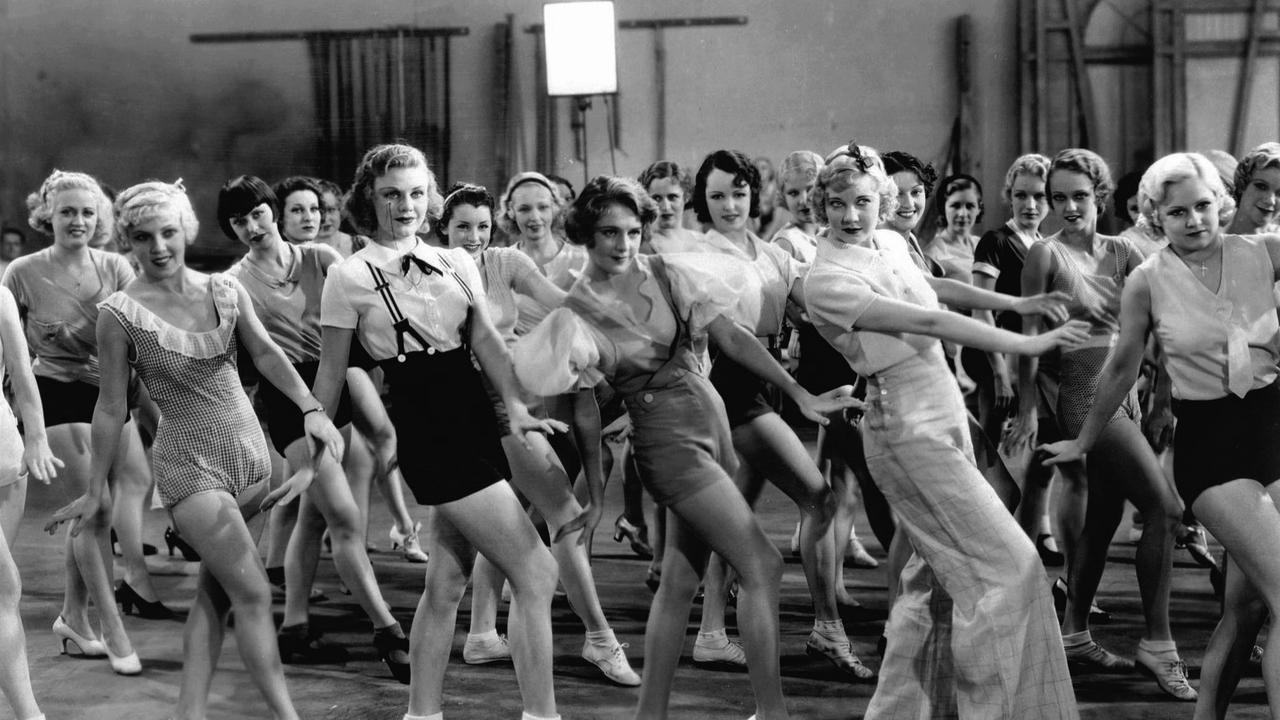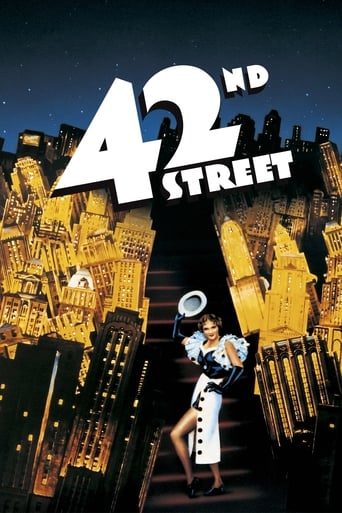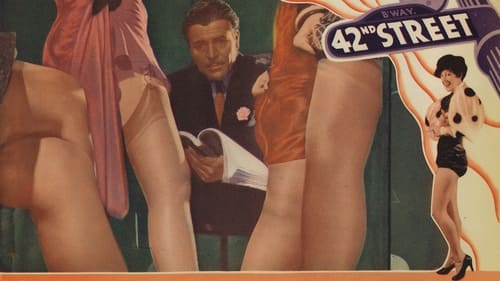



Best movie of this year hands down!
Surprisingly incoherent and boring
The plot isn't so bad, but the pace of storytelling is too slow which makes people bored. Certain moments are so obvious and unnecessary for the main plot. I would've fast-forwarded those moments if it was an online streaming. The ending looks like implying a sequel, not sure if this movie will get one
View MoreThe movie's not perfect, but it sticks the landing of its message. It was engaging - thrilling at times - and I personally thought it was a great time.
View MoreThis classic old movie talks about people working on a play. The first half of this movie isn't great as it just features them preparing for the play. It's not bad. We do some good character build up and it probably makes the second half all the more rewarding. The second half is them actually showing us the play in its entirety, more or less. The buildup is so good it's what makes the overall movie great. We get to see all the great sets, song numbers and wonderful camera angles. Would it have worked better if the whole movie was the play? Maybe.You get more anticipation this way and the payoff is great. There were a lot of these musicals made in the early 1930's and I'm glad to see one of the most well known. Wait, 42nd Street? So that's where Douglas Adams got the number 42 from! I admit I was afraid they'd get more into the outside plot at the end, but it actually ended right there. I'm glad, because it's great to see a movie that's so well organized. I appreciate it for setting up future musicals too. ***1/2
View More42nd STREET is grounded in reality from its very first scene. The Depression had devastated Broadway and by 1932 even the lower priced film industry was finding its very survival threatened by the hard times. It was no joke that a successful actress (Bebe Daniels) would submit to an affair with a slimy tycoon (Guy Kibbee) in order to secure the backing for a new production. Nor was it a mere fancy that a famous stage director (Warner Baxter) would find himself penniless by way of the stock market, nor that he would resort to strong arm tactics to ensure a show's success. And that chorus girls would consider themselves lucky to have the opportunity of driving themselves into the ground when the real alternative was starvation? As Ginger Rogers would say in the next Berkeley extravaganza: "It's the Depression, dearie."This inherent grittiness of 42nd STREET was and would remain rare in what are normally straight 'musical comedies'. The alleged escapism of thirties' movies is much overstated. I doubt that any era's films were as obsessive about depicting the suffering engendered by contemporary conditions (certainly not our own, but that's another story). However, plots can always be slotted into a relatively small number of patterns. 42nd STREET in general gives us the story of a disparate group of people being brought together by a hard-driving leader with a vision in order to accomplish something, in this case putting on a show. In a military context you would have a disparate group of soldiers being molded into a unit by a hard-driving drill sergeant. Or the project could be some sort of business, or a political campaign. In 42nd STREET, it's show business.Putting the emphasis on the leader gives one sort of story, often a biography, but despite the fact that Warner Baxter's character probably remains its most important, 42nd STREET always keeps its emphasis on the process and eventually on the show itself. Its heart, I think, remains always the chorus girls pounding themselves into exhaustion in one montage after another. Until its final twenty minutes, 42nd STREET's plot consists of various character vignettes garnished with some very sharp comedy, particularly from our acid-tongued 'Greek Chorus', Lorraine (Una Merkel) and Anytime Annie (Ginger Rogers), the all underlined with a barely concealed desperation.42nd STREET's various plot elements were not all that original at the time and of course have become far less so in the intervening years; however, its emotional treatment of these elements is anything but cliché-ish. Its Warren and Dubin musical score is excellent, Berkeley's production numbers may give us our first taste of his surrealistic genius (I haven't seen his Eddie Cantor movies so I'm not sure about that), the cast is a brilliant mixture of veterans (Baxter in the performance of his career, and maybe the same could be said of Daniels) along with rising young talent (Dick Powell, Ginger Rogers, Ruby Keeler). This movie wasn't exactly the inventor of the clichés, it was the film that used them so memorably that they became set in our collective mind.There have been few musicals so wonderful as 42nd STREET.
View MoreMy observations: Let's hear it for the dancers. I am a tap dancer. All the boo hoo about Ruby's tap dancing is absurd. She was a star, and you are not. In the 42nd street title dance sequence, she is tap dancing in what we of modern tap dance styles call "rhythm tap", in which the dancer dances closer to the ground and may even pitch a little forward on the toe taps. The old style of tap dance is called "Broadway tap", where the woman is up on the higher heeled tap shoes and the carriage is held higher and posture more erect. As far as Ruby's "clumsy" dancing, that is also absurd. She was dancing in flat tap shoes, whereas when she and other women danced in higher heeled tap shoes they more tended to "dance on air". IMO, high heeled tap shoes are more elegant and sexy. I have tap danced in both types.Furthermore, most of the time you only saw women tap dancing in the higher heeled tap shoes, anyway, ala Ann Miller, Ginger Rogers, Eleanor Powell, Marge Champion, et al. Flat tap shoes ala 42nd Street number by Ruby Keeler always make a louder, stronger tap sound. They are what the men wear. I mean, did you ever see movie men tap dance in high heeled tap shoes? Additionally, notice other early tap movies. Old fashioned stories such as Shirley Temple (a child, of course), wearing her long dresses while tapping in flat tap shoes without much sound: tap's early days were done with wooden taps; metal taps came along much later. Lots of tap movies done with old wooden taps didn't have much sound. As a matter of fact, in tap movies the sound was added later; there were no microphones on the tap shoes or on the floors. This is why, I think, that upon seeing old tap movies today I can hear many more taps than the dancer could possibly dance in the time depicted.Further, high heeled tap shoes have smaller taps in general. The toe taps can be smaller than on the flat tap shoes, or what I call the men's tap shoes. A big man has gigantic toe taps. The high heeled women's tap shoes have tiny, little heel taps, that don't make much sound.More observations about this film: Julian Marsh reminds me of Florenz Ziegfeld. After the 1929 Stock Market Crash and ensuing Great Depression, Ziggy was bankrupt and in ill health, and later passed away, his wife Billie Burke going back to work to pay his bills (witness her daffy characters in some movies plus her later blockbuster Wizard of Oz).Julian Marsh was a desperate, formerly on top Broadway producer, in ill health and who I feel had a terminal illness diagnosis from his physician on the phone earlier in the film.1933 was six years after the 1927 Jazz Singer sound debut. 1933 was in The Great Depression. I thought that the film 42nd Street did very well, considering these things. Additionally, in Singin' in the Rain, 1951, it shows how early sound films had problems with production values such as microphones. I like 42nd Street. It still gets people interested in tap dancing.Broadway also fared badly during and after World War One. Audiences stayed away, men were sent off to war, shows closed, bankruptcies abounded. In my opinion, wars and economic downturns affect Broadway. There are some success stories, however. During World War Two, Broadway fared well with dancing musicals such as Oklahoma and Carousel; they both had ballet dances included in the storytelling.Broadway is still here. Musicals still abound. Silent movies, sound movies and television never killed Broadway. Movies and TV preserve actor's/dancers'/singers' performances, yes, but even those -- as they age -- are subject to faulty and expensive preservation techniques.Viva La Broadway Show, and filmed depictions thereof.10/10
View MoreI just saw this movie this weekend for the first time all the way through and really enjoyed it. I love classic movies but tended to shy away from the musicals until I read a few bios lately on various stars and directors of the genre and was glad when this one came so I could tape it and watch it.The story is basic, of course, but it moves quickly, seems realistic as far it goes, the acting is good without any noticeable overacting that often comes across when we watch these old movies 50+ years later. I really like Ruby Keeler and also Bebe Daniels in their roles. And it was funny to see Ginger Rogers in a such a small part.
View More